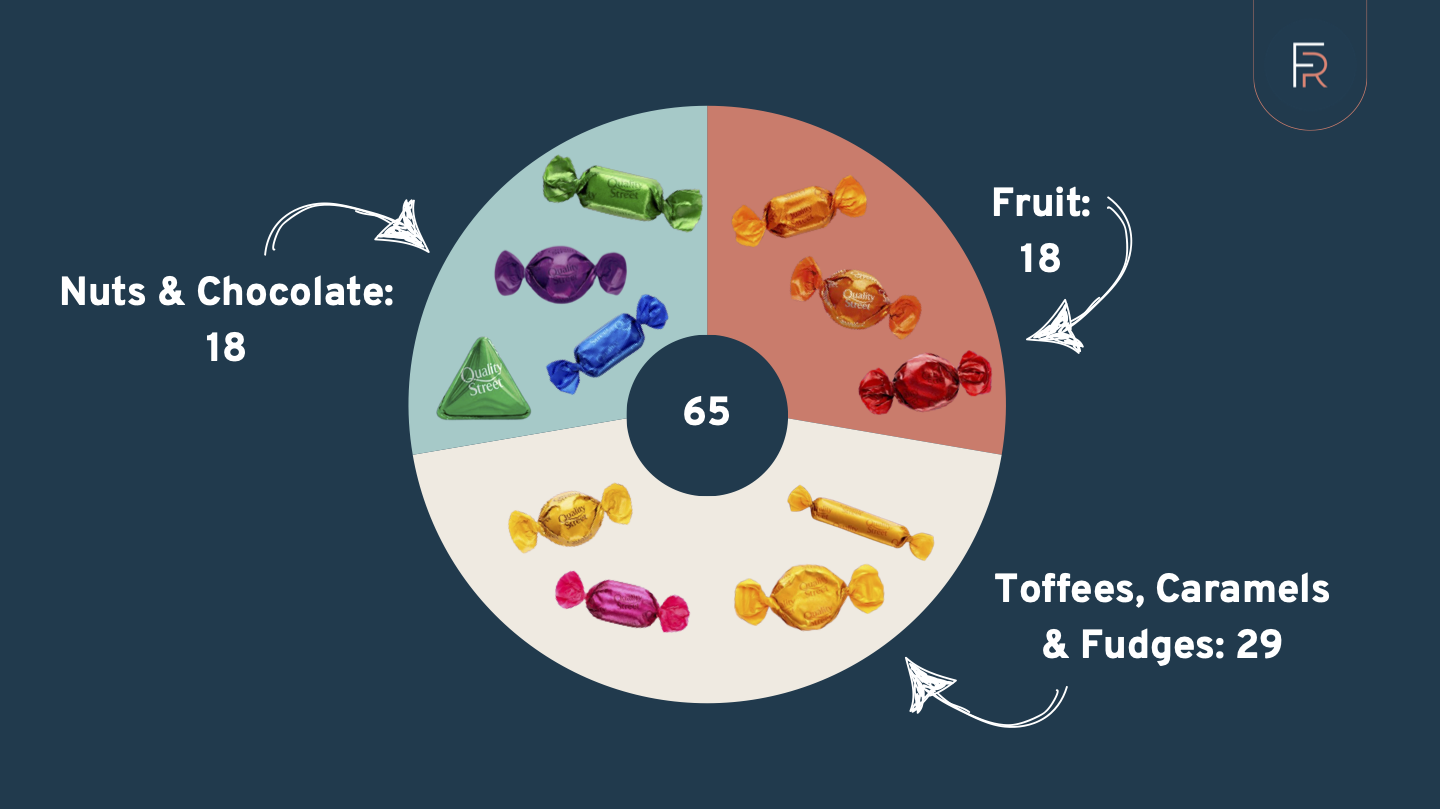How to perfect your product mix
Part One of Merchandising lessons from a tin of Quality Street
This is the first in a series of three blog posts inspired by a merchandising talk given by Flourish founder Sarah Johnson at the Top Drawer retail trade show in London in January 2025.
Every business (not just the big ones) should have merchandising as its best friend. The key to profitability and retail success, merchandising can help with everything from pricing to stock control, profitability and more.
In this series, we’re looking at three merchandising lessons we can learn with a little help from a tin of Quality Streets (yum):
How to perfect your product mix
How to use data to drive decisions
How to adapt your retail business in changing times
Today, we’re focusing on product mix.
Imagine a tin of Quality Street. Or better still, start with an actual tin of Quality Street.
Introducing product hierarchies
Think of the tin as your business, and of the sweets as your individual products.
In the tin (or in your business) there are 65 sweets (products). These 65 sweets can all be grouped into one of three categories – or in merchandising speak, three product hierarchy areas.
Nuts & chocolate (18 sweets – Green Triangle, The Purple One, Coconut Eclair and Milk Choc Blocks)
Fruit (18 sweets – Orange Crème, Orange Crunch, Strawberry Delight)
Toffees, caramels and fudge (29 sweets – Caramel Swirl, Fudge, Toffee Penny and Toffee Finger)
Within those three product hierarchy areas, we then want to look at how many of each type of sweet goes in the tin.
At the top end of the count, we have at least seven of each of the toffees and caramels – and a whopping eight fudges! Shockingly (and sadly), there are only five The Purple Ones and four Green Triangles. There are also only four Orange Crunches, but I know that might not trouble you as much as it does me.
But is this random (spoiler: it isn’t) and if not, how did they decide all this?
Planning your product mix
Like the spoiler said, the mix isn’t random. It’s very carefully curated, in fact.
Nestle, which makes Quality Street, is finding the balance between a mix that delights their customers (so we keep buying their tins) and one that keeps their costs realistic and competitive.
Having a mix that prioritises the most popular options sounds great, but they also need to compete in the market, meaning their selling price has to be realistic and similar to their competitors (or to what customers expect). And, of course, it needs to make a profit – because this is a business!
Let’s look at an example. The Purple One is probably pretty pricey to make (the price of hazelnuts has soared recently). On the other hand, toffees, caramels and fudges are cheaper to make – which is why they’re represented in higher proportions.
How this works in your business
Try thinking of your product range like Quality Street's hierarchy. How would you structure your hierarchy areas in an intentional way? And how would you balance what your customers love with keeping a realistic price?
Want to give this a go? Learn more about product hierarchies in our free guide.
Want to know what else we can learn from a box of Quality Street? You might like the other posts in this series:
· How to use data to drive decisions
· How to adapt your retail business in changing times


